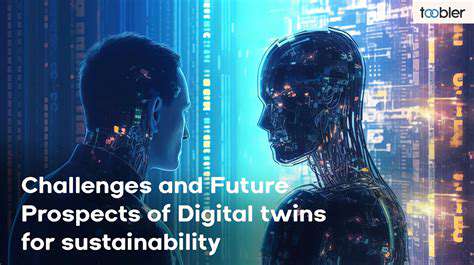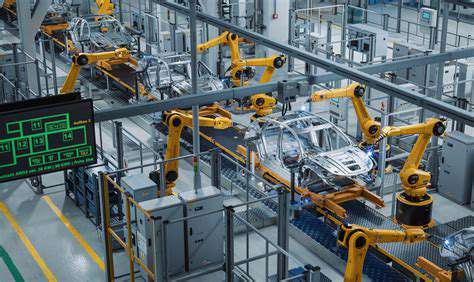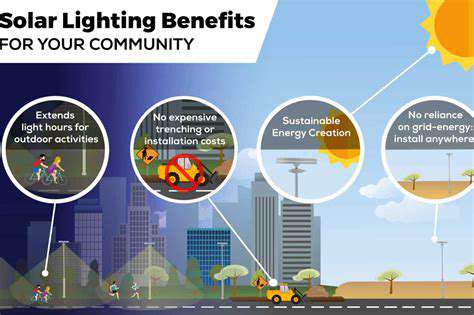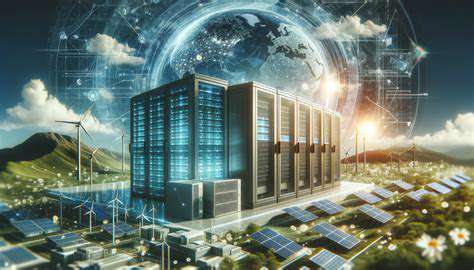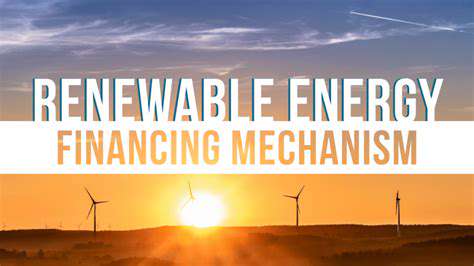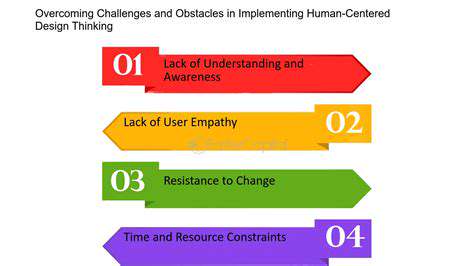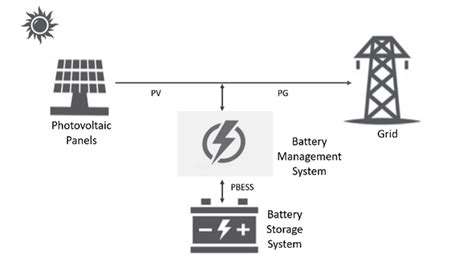The Economics of Local Energy Production
The traditional model of energy production, reliant on large-scale centralized power plants, is increasingly being challenged by the growing recognition of Decentralized energy systems. These systems, characterized by smaller, distributed generation units, offer a more localized approach to energy production and consumption. This shift towards decentralization is driven by a multitude of factors, including a desire for greater energy security and resilience, as well as a growing awareness of the environmental impact of large-scale power plants.
The transition to decentralized energy systems is not simply a technological shift; it's also a profound economic and social transformation. It empowers communities to take control of their energy needs, fostering a sense of local ownership and responsibility in energy production and distribution, thereby reducing reliance on centralized entities.
Economic Benefits of Local Energy Generation
Decentralized energy systems offer a range of economic benefits. By reducing reliance on long-distance transmission lines, communities can significantly lower their energy costs. Local energy generation can create new job opportunities in manufacturing, installation, and maintenance. Further, the potential for energy storage solutions within these systems can contribute to greater energy reliability and potentially lower the cost of electricity, especially in remote or underserved areas.
The ability to leverage local resources for energy generation also creates economic opportunities for local businesses and communities. This includes the potential for establishing local energy cooperatives, enabling communities to directly benefit from the economic activity associated with energy production and distribution.
Environmental Impacts of Decentralized Systems
Decentralized energy systems often prioritize Renewable energy sources, such as solar and wind power, thereby significantly reducing the carbon footprint of energy production. This shift away from fossil fuels leads to a decrease in greenhouse gas emissions and contributes to a healthier environment. The proximity of energy generation to consumption also minimizes transmission losses, further enhancing the environmental sustainability of the system. The smaller scale of individual energy generation units can also lead to reduced environmental impact during the manufacturing and disposal of equipment.
Technological Advancements Driving Decentralization
Significant advancements in renewable energy technologies, coupled with the development of smart grid technologies, have made decentralized energy systems more viable and efficient. Solar panels, wind turbines, and battery storage solutions are becoming increasingly affordable and readily available, making them more accessible for residential and commercial use. Smart grid technologies enable better management of energy flow, optimize energy distribution, and integrate various energy sources seamlessly. These advancements are crucial for the smooth transition to a more decentralized energy future.
Regulatory and Policy Considerations for Decentralization
To facilitate the successful implementation of decentralized energy systems, supportive regulations and policies are crucial. These policies should address grid integration challenges, encourage investment in local energy infrastructure, and ensure fair competition among energy providers. Clear regulatory frameworks are essential to manage potential conflicts between the interests of local communities and larger energy companies. Appropriate policies can also encourage the development of local energy cooperatives, fostering community participation and ownership in the energy sector.
Economic Benefits of Local Energy Generation

Reduced Energy Costs
Local energy generation, whether through solar, wind, or other renewable sources, can significantly reduce energy costs for individuals and businesses. By reducing reliance on centralized power grids, consumers can potentially lower their electricity bills. This is especially true in areas with high energy prices or unreliable grid infrastructure, where the cost savings from self-generation can be substantial. Lower energy bills translate directly into increased disposable income, boosting local economies.
Furthermore, the long-term cost savings associated with local energy sources often outweigh the initial investment costs. Investing in local renewable energy infrastructure can generate significant returns over time through reduced energy expenses.
Job Creation and Economic Development
The development and implementation of local energy projects create numerous job opportunities in construction, maintenance, and operation. These jobs range from skilled technicians and engineers to entry-level positions, stimulating economic growth within the local community. Furthermore, the increased demand for local renewable energy products and services can lead to the establishment of new businesses and industries, further diversifying the local economy.
Improved Infrastructure
Local energy projects often necessitate the development or improvement of local infrastructure. This can include the construction of new transmission lines, storage facilities, or other supporting infrastructure. This investment in local infrastructure can lead to improved overall quality of life for residents, fostering a more sustainable and resilient community. The improved infrastructure can also attract further investment and development, creating a positive feedback loop for economic growth.
Enhanced Energy Security
Diversifying energy sources through local generation enhances energy security. By reducing dependence on distant, centralized power plants, communities become less vulnerable to fluctuations in global energy markets or disruptions to the national grid. This resilience in energy supply fosters greater economic stability and reduces the risk of costly energy shortages.
Environmental Benefits and Sustainability
Local renewable energy sources often have a significantly lower environmental impact compared to traditional fossil fuel-based energy. Reduced greenhouse gas emissions contribute to a healthier environment, mitigating the effects of climate change. This commitment to environmental sustainability can also attract environmentally conscious businesses and residents, further bolstering the local economy.
Attracting Investment and Tourism
Communities that embrace local renewable energy often become more attractive to investors and tourists. Demonstrating a commitment to sustainability can attract businesses seeking environmentally responsible locations. The presence of renewable energy projects can also enhance the appeal of the area for tourists interested in eco-tourism and sustainable travel, leading to increased revenue and employment opportunities in the hospitality sector.
The Role of Renewable Energy Sources
The Environmental Benefits of Renewables
Renewable energy sources, such as solar, wind, and hydro power, significantly reduce the environmental impact of energy production. These sources produce little to no greenhouse gas emissions during operation, mitigating climate change and improving air quality. By transitioning to renewables, we can lessen our reliance on fossil fuels, which contribute to pollution and harm ecosystems. This shift towards cleaner energy sources also helps protect biodiversity and preserves natural resources for future generations, making it a crucial element of sustainable development.
The reduced reliance on fossil fuels translates to a decrease in harmful pollutants released into the atmosphere. This, in turn, leads to improvements in public health, reducing respiratory illnesses and other health problems associated with air pollution. The environmental benefits extend beyond air quality, encompassing water quality and soil health, ultimately creating a healthier planet for all.
Economic Advantages of Local Renewable Energy
Investing in local renewable energy projects can stimulate economic growth within communities. The creation of jobs in manufacturing, installation, maintenance, and operation of renewable energy systems boosts local economies. Furthermore, reducing reliance on imported fossil fuels can lead to significant savings for communities, improving their financial stability and resilience.
Local renewable energy projects often lead to the development of specialized skills and knowledge within the community. This upskilling can create opportunities for entrepreneurship and innovation, fostering a more diverse and dynamic local economy. The long-term economic benefits of local renewable energy initiatives are substantial, contributing to a more sustainable and prosperous future for communities.
Challenges and Considerations in Implementing Local Renewable Energy
Implementing renewable energy projects necessitates careful planning and consideration of factors such as land availability, environmental regulations, and grid infrastructure. The upfront costs of installing renewable energy systems can be significant, requiring careful financial planning and potentially attracting external investment. Community acceptance and engagement are also crucial for the successful implementation of these projects.
Another important consideration is the intermittency of some renewable energy sources, such as solar and wind. Strategies for energy storage and grid management are essential to ensure a consistent and reliable energy supply. Addressing these challenges through innovative solutions and public-private partnerships is crucial for the successful integration of renewable energy into local energy systems.
Policy Support and Incentives for Renewable Energy
Government policies and incentives play a critical role in encouraging the adoption of renewable energy. Tax credits, subsidies, and feed-in tariffs can make renewable energy projects more financially attractive to investors and communities. These policies can help overcome the initial financial barriers and accelerate the transition to a more sustainable energy future. Clear regulations and streamlined permitting processes can also significantly facilitate the development and deployment of renewable energy projects.
Furthermore, supportive policies can encourage research and development in renewable energy technologies, leading to cost reductions and increased efficiency over time. This continuous improvement and innovation are vital for the long-term success and widespread adoption of renewable energy solutions. Strong policy frameworks that incentivize local renewable energy production are essential for achieving a sustainable and resilient energy system.
The metaverse avatar is more than just a digital representation; it's a crucial component of the user experience. It acts as a personal proxy, allowing individuals to interact with virtual environments, participate in activities, and engage with other users in a personalized and meaningful way. This digital representation significantly impacts how users perceive and navigate the metaverse. The avatar’s design, customization options, and functionalities directly influence the user's sense of presence and immersion.
Financial Incentives and Policy Support

Financial Incentives for Sustainable Practices
Financial incentives are crucial tools for encouraging businesses and individuals to adopt sustainable practices. These incentives, such as tax credits, subsidies, and grants, can significantly reduce the initial investment costs associated with sustainable technologies and processes. By making sustainable options more affordable, these incentives help level the playing field between sustainable and conventional choices, fostering a shift towards environmentally friendly practices.
Many governments and organizations are implementing various financial incentives to stimulate investment in renewable energy sources, energy efficiency improvements, and waste reduction initiatives. These incentives can take the form of direct payments, tax breaks, or preferential loan terms, thereby providing tangible support for businesses and individuals committed to sustainability.
Policy Support for Sustainable Innovation
Effective policies are essential for creating an environment conducive to sustainable innovation. These policies provide a framework that encourages research and development in sustainable technologies, promotes the adoption of sustainable practices, and ultimately drives a transition to a more sustainable future. Clear and consistent regulations, along with supportive policies, can significantly impact the pace and scale of sustainable innovation.
Government policies can play a key role in supporting sustainable practices by establishing regulations on pollution levels, promoting energy efficiency standards, and incentivizing the use of sustainable materials. Such policies provide a clear signal to businesses and consumers regarding the importance of sustainability, motivating them to incorporate sustainable practices into their operations and daily routines.
The Role of Tax Incentives in Driving Sustainability
Tax incentives can be powerful drivers of sustainable behavior, encouraging businesses to invest in environmentally friendly technologies and practices. These incentives can take various forms, such as tax credits for renewable energy installations, deductions for energy efficiency upgrades, and exemptions for sustainable products. These incentives can make environmentally friendly choices more attractive financially, ultimately encouraging a broader adoption of sustainable practices.
Sustainable Funding Mechanisms and Investment
Sustainable funding mechanisms are crucial for supporting projects and initiatives that promote environmental protection and social responsibility. These mechanisms can include green bonds, impact investments, and other innovative financial instruments that channel capital towards projects with positive environmental and social impacts. Diversifying funding sources and attracting private investment are essential for scaling up sustainable solutions and achieving widespread adoption.
Incentivizing Sustainable Consumption Patterns
Encouraging sustainable consumption patterns is vital for reducing environmental impact. This can be achieved through various policies and incentives such as subsidies for eco-friendly products, labeling schemes to inform consumers about the environmental footprint of goods, and campaigns to promote responsible consumption habits. These measures will help consumers make more sustainable choices and reduce waste.
Public-Private Partnerships for Sustainable Development
Public-private partnerships are crucial for leveraging resources and expertise to achieve sustainable development goals. Collaborations between governments, businesses, and non-profit organizations can facilitate the development and implementation of innovative solutions. These partnerships can mobilize resources and expertise, accelerating progress toward a more sustainable future. Effective partnerships foster collaborative innovation and knowledge sharing, ultimately leading to more comprehensive and effective strategies for sustainable development.
